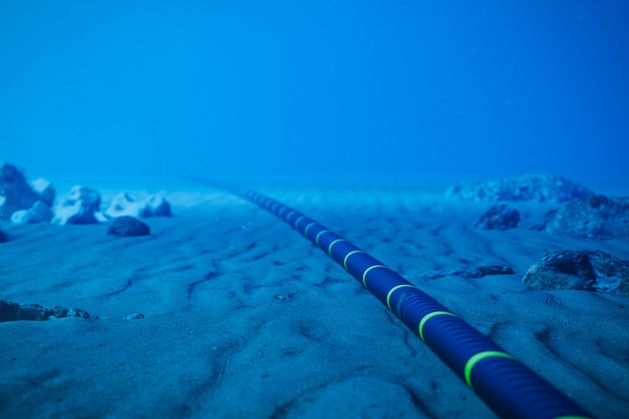Cable would make it possible to send electricity in both directions between Europe and the US
The proposed development of a multi-billion-euro renewable electricity interconnector between North America and Europe is being touted as a way of strengthening energy security among members of the military alliance. The plans are being spearheaded from Ireland, despite this country’s military neutrality.
One of the founders of the project, Franco-British energy veteran Laurent Segalen, insists there is no reason why the plan should set off alarm bells for Ireland or any other country.
“It’s just a cable the size of a pizza,” he said. “If people feel threatened by this, I think we’re not on the same planet. Ireland is a very good nexus point [for it].”
The project is called the North Atlantic Transmission One Link (Nato-L). The founders recently established companies in Ireland with the aim of developing it.
Ireland is a neutral country and not a member of Nato, which has expanded its membership since Russia invaded Ukraine in 2022.
“Everybody will see something different in it,” Mr Segalen said.
“If I talk to Germany, for instance, they are very positively sensitive of the military aspect. This interconnector has many positive facets.”
One positive, he said, was that material from China would not be needed to develop the interconnector. He said it would also generate employment.
The 6GW system would be made up of pairs of cables stretching about 3,500km across the North Atlantic. The cables would probably land in countries including Canada and the US, as well as possibly landing in Ireland, France and Britain. The website for the interconnector project (nato-l.org) states: “For Nato, it is a way to build a physical link between its two blocks, strengthening energy security among its members in a time when energy is being weaponised by hostile regimes.”
Mr Segalen outlined how, later this year, the founders hope to embark on a fundraising round to secure between €5m and €20m to finance the first three years of planning and investigations into the project. It is estimated that the project could eventually cost anywhere between €20bn and €40bn.
He said if the renewable electricity interconnector is built, which would be about 15 years from now, he envisages it being a public-private partnership.
“Any interconnector needs public support,” Mr Segalen said. “There is a lot of interest, a lot of curiosity about it. We are having interesting conversations at a relatively high level.”
He confirmed that no money would be accepted from investors in China or Russia to develop it, as that would undermine the underlying premise of the project, which is to strengthen energy security.
The Nato-L cable would allow electricity to be sent in both directions across the Atlantic. It would enable Europe to send power to North America at night, for example, when demand here is low but it is still daytime there and demand is high. It would work the opposite way during daytime hours in Europe.
A co-founder of the project, Simon Ludlam, has extensive experience in the energy sector. He was the project director of the €1bn Greenlink electricity interconnector that has been built between Co Wexford and Pembrokeshire in Wales and which is due to come on stream this year.
Mr Ludlam has also been attempting to build another interconnector between Wales and Ireland.

